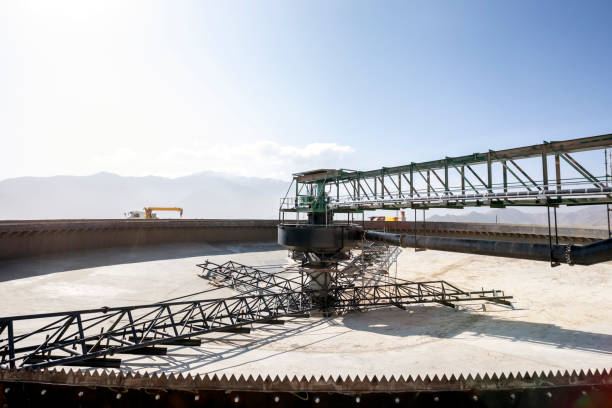Innovating Critical Mineral Processing

Q1. Could you start by giving us a brief overview of your professional background, particularly focusing on your expertise in the industry?
I am a Senior Mineral Processing and Metallurgical Engineer with over 20 years of international experience. My career began in the USA, where I specialized in SAG mill and HPGR design and optimization. Since then, I have contributed to more than 55 projects worldwide, covering scoping, feasibility, bankable feasibility studies, EPCM, commissioning, and optimization of mineral processing plants.
I hold a PhD from the University of Utah in Metallurgical Engineering and am a Chartered Engineer (CEng MIMMM) with IOM3. My expertise spans comminution, flowsheet design, process optimization, Population Balance Modeling (PBM), Discrete Element Modeling (DEM), hydrometallurgy, and mine-to-plant integration. I have also developed several mineral processing software tools, including grinding simulators and trade-off analysis platforms.
My track record includes NI43-101 compliant studies, EPCM projects for large gold heap leach plants, iron pelletizing facilities, phosphate flotation projects, and optimization of copper, gold, chrome, and industrial mineral plants. I am also a certified engineering trainer with the EIC (Engineering Institute of Canada) and have delivered numerous professional courses globally.
Q2. How is the surging demand for critical minerals like lithium, copper, nickel, cobalt, and rare earth elements reshaping global mineral processing and supply chains in 2025?
The rapid growth in demand for lithium, copper, nickel, cobalt, and rare earth elements is reshaping both mineral processing technologies and global supply chains. In 2025, three key shifts are evident:
Technology-Driven Processing
Advanced grinding and separation technologies (such as HPGR, ultrafine grinding, selective flotation, and sensor-based sorting) are being deployed to maximize recovery from complex and lower-grade ores.
Localization of Supply Chains
Particularly for important minerals like lithium hydroxide and rare earth oxides, nations are giving priority to indigenous processing facilities in order to lessen their need on foreign refineries.
Integration with Clean Energy Goals
Since EV batteries, solar panels, and wind turbines all require significant inputs of these minerals, the mineral industry is closely related to the clean energy transition. Unprecedented investment in brownfield and greenfield developments is being fueled by this.
Q3. What strategies are being adopted by governments and companies to diversify and secure resilient supply chains for critical minerals?
Governments and corporations are adopting multi-pronged approaches:
Policy and Regulation
Critical mineral strategies (e.g., EU Critical Raw Materials Act, U.S. Inflation Reduction Act) incentivize local mining and processing.
Alliances and Partnerships
Long-term supply is ensured by cross-border agreements between producing and consuming countries.
Vertical Integration
In order to secure feedstock, OEMs and battery makers are making direct investments in mining projects.
Recycling and Circular Economy
To diversify supplies and ease the demand on primary extraction, significant investment is being made in secondary raw materials and battery recycling.
Q4. What advancements in sustainable mining practices and responsible sourcing are being prioritized?
The industry is prioritizing:
Water and Energy Efficiency
Dry grinding, tailings dewatering, and renewable-energy-powered plants are becoming mainstream.
Reduced Carbon Footprint
Electrification of haul trucks, solar-powered operations, and carbon-neutral smelting initiatives.
Responsible Sourcing Certification
ESG standards (IRMA, ICMM, ISO) and blockchain-based traceability systems are being adopted to ensure transparency from mine to market.
Biodiversity and Social Governance
Projects now integrate biodiversity offsets, community benefit-sharing, and stricter social license to operate.
Q5. What percentage of global mining companies have adopted AI-driven automation in their core operations—and what real ROI or productivity gains have been realized?
By 2025, approximately 45–55% of global mining companies will have adopted AI-driven automation in some part of their core operations. Realized benefits include:
Productivity Gains
Through predictive maintenance, optimized grinding/flotation control, and mine-to-mill integration, productivity has increased by 10–20% in many cases.
Cost Savings
Energy costs in comminution—one of the most intensive areas—have been reduced by 5–15%.
Safety Improvements
Autonomous haulage and drone-based monitoring have reduced accident rates significantly in high-risk environments.
Q6. Which mining companies or projects have demonstrated the highest returns and cost savings from deploying AI-powered automation in mineral processing as of 2025?
Some notable examples include:
Rio Tinto’s Pilbara iron ore operations (Australia)
Autonomous trains and trucks, plus AI-optimized processing, yield hundreds of millions in savings annually.
BHP’s copper operations in Chile
AI-enhanced flotation optimization delivering double-digit improvements in copper recovery.
Gold Fields (South Africa/Australia)
Deployment of digital twins and AI-driven plant optimization has achieved higher throughput with reduced reagent costs.
Smaller-scale examples
In Turkey and Latin America, AI-based grinding circuit optimization in HPGR and SAG circuits has demonstrated 5–10% throughput improvements with measurable CAPEX deferrals.
Q7. If you were an investor looking at companies within the space, what critical question would you pose to their senior management?
If I were an investor, my key question to senior management would be:
“How resilient and future-proof is your flowsheet against ore variability, ESG pressures, and emerging technologies such as AI, electrification, and recycling integration?”
This question probes both technical and strategic readiness. Orebody uncertainty, environmental regulation, and rapid technology shifts can erode project economics. Companies that demonstrate robust, flexible flowsheets with built-in digital optimization and ESG compliance will likely outperform peers in the next decade.
Comments
No comments yet. Be the first to comment!
